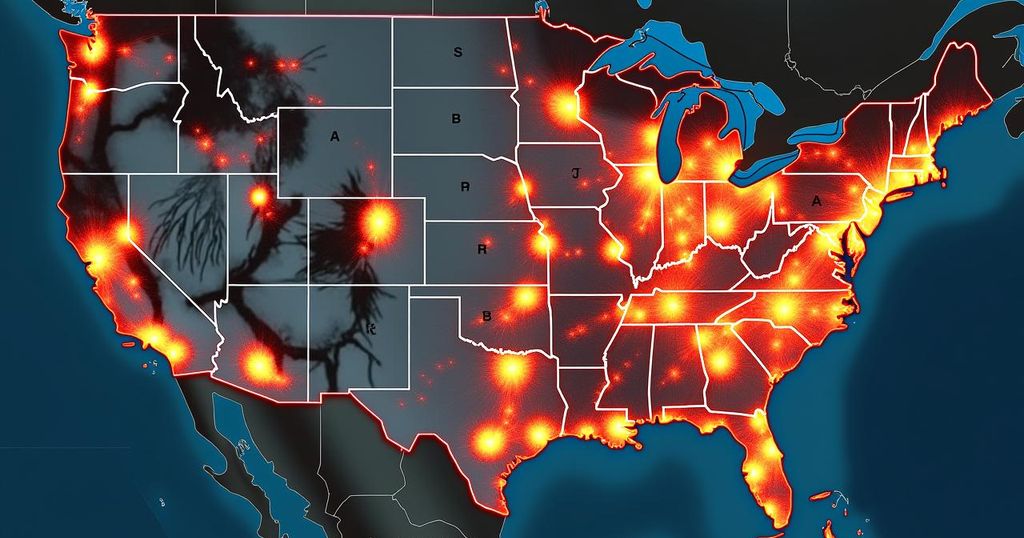The Catastrophic Impact of Hurricane Helene Across Multiple States

Hurricane Helene, a Category 4 storm that made landfall on September 26, 2024, in Florida, caused widespread destruction across six states, resulting in at least 230 deaths. The combination of its immense size, record storm surge, and significant rainfall led to severe flooding, particularly in inland areas, highlighting serious concerns regarding hurricane preparedness and the changing nature of storms in a warming climate.
Hurricane Helene, which made landfall on September 26, 2024, near Perry, Florida as a Category 4 storm with sustained winds of 140 mph, stands out as one of the most destructive hurricanes in recent history. Spanning over 500 miles inland, Helene was responsible for flooding and destruction across multiple states including Florida, Georgia, South Carolina, North Carolina, Tennessee, and Virginia, resulting in at least 230 fatalities. The combination of its immense size, storm surge, and rainfall made Helene far more devastating than its wind speed might suggest. While coastal regions like Cedar Key and Tampa suffered substantial storm surges, it was the inland flooding, particularly in mountainous areas, that caused considerable damage and loss of life. Helene’s winds were notably powerful not only in Florida but also as the storm progressed northward, leaving over 2 million homes without power in Georgia and South Carolina. Areas such as Valdosta and Augusta experienced severe wind impacts, rare for those regions. Moreover, Helene’s size, comparable to Hurricane Katrina, contributed to a storm surge that peaked near 15 feet in the Big Bend region. Cedar Key recorded a storm surge of 9.3 feet, among its highest historical values. The inland flooding, exacerbated by orographic uplift as Helene moved over the southern Blue Ridge Mountains, resulted in over 20 inches of rain in some areas, leading to extreme flooding conditions. The French Broad River in Asheville, North Carolina, reached unprecedented levels, surpassing records from previous hurricanes. As climate change continues to influence weather patterns, Helene’s impacts serve as a critical reminder that hurricanes must be assessed beyond wind speed, with increasing concern for rainfall and subsequent flooding as a major risk factor. Meteorological assessments indicate that this multifaceted nature of hurricane damage may become increasingly common as ocean temperatures rise, sustaining stronger and wetter storms.
Hurricane Helene is a significant event in hurricane history, demonstrating the complex interplay of wind, storm surge, and rainfall effects during hurricanes. The unprecedented scale of Helene’s destruction, especially beyond the coastal boundaries, highlights the risks associated with inland flooding exacerbated by rapid rainfall, geographic feature interactions, and climate change influences. This hurricane serves as a case study for future preparedness and risk assessments by researchers and meteorologists.
In summary, Hurricane Helene exemplifies the complexities of hurricane impacts, illustrating that the severity of damage is not solely determined by wind speed but is significantly affected by factors such as storm size, forward speed, storm surge, and rainfall. This hurricane’s devastation, particularly in inland areas unprepared for such conditions, emphasizes the evolving nature of hurricane risks in a warming climate, necessitating robust forecasting and preparedness strategies to mitigate future disasters.
Original Source: theconversation.com






